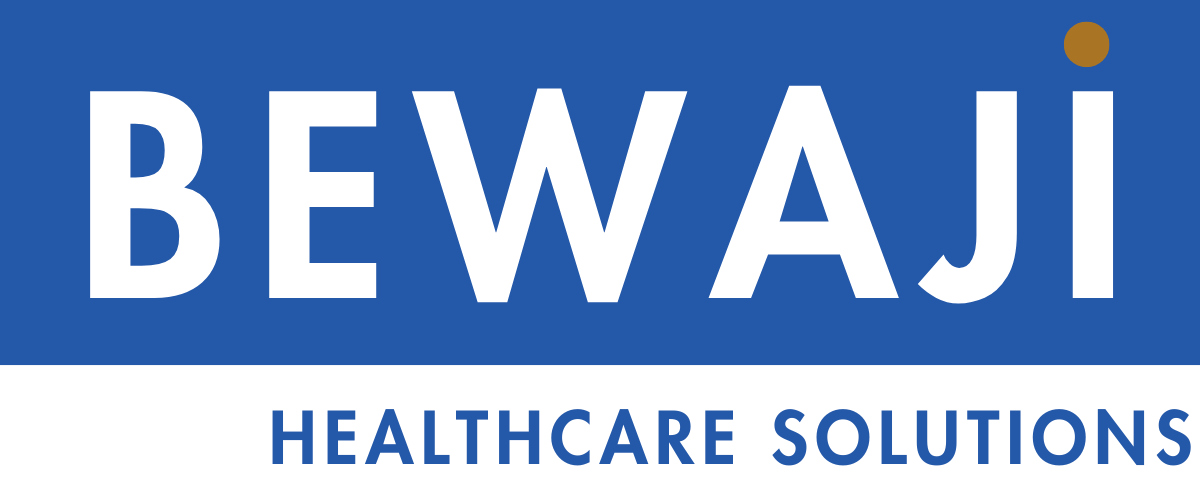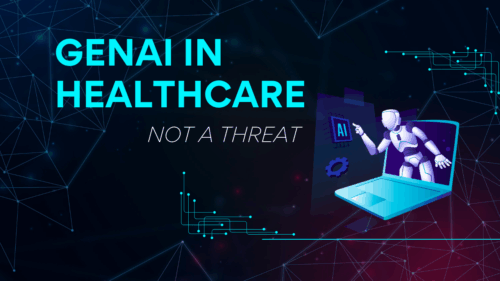Listen to the topic on Spotify:
In the hushed, contemplative corridors of healthcare institutions, where every decision and action can ripple through countless lives, the question of motivation stands stark and profound: How do we, as leaders and managers ignite the spark of dedication and creativity in our teams amidst the maelstrom of perfectionism, stress, and burnout? This is not a rhetorical flourish but a pressing inquiry into the heart of modern workplace dynamics.
Today, our workplaces are crucibles of high expectations and relentless drive for perfection. Like a revealing light, the pandemic has illuminated the fragility of our work-life balance, casting long shadows on the well-being of employees. As stress and burnout seep through the cracks of our meticulously structured professional lives, the essence of work, its intrinsic value, is at stake. This erosion is not merely a matter of personal discontent but a catalyst for a widespread decline in motivation and productivity.
This article contends that certain managerial behaviors, often subtle and unintended, steadily erode the intrinsic value of work, leading to a noticeable dip in employee motivation and productivity. Our journey here is not merely to identify these behaviors but to offer strategies to safeguard and elevate the perceived meaningfulness and significance of work among employees. This enhancement of internal motivation and performance is not just desirable but imperative.
Why is this exploration crucial? Motivation is the silent engine of productivity and the unseen heartbeat of a healthy workplace. When neglected, its absence can lead to a cascade of adverse outcomes, impacting not only individual performance but the collective well-being of the organization.
We will delve into recognizing employee contributions, fostering a sense of ownership, ensuring work visibility and relevance, and effectively communicating changes and priorities. These pillars form the foundation of our strategy to rekindle motivation and creativity in the workplace.
As we embark on this exploration, we will provide insights and practical approaches to invigorate workplace motivation. We are not just discussing theories but charting a course towards tangible change. This journey requires us to understand and appreciate the intricate dance of leadership and management, guiding us through the labyrinth of modern workplace challenges.
To begin, let’s consider the personalization of recognition. In healthcare, where the work ranges from life-saving surgeries to compassionate patient care, recognition should be as individualized as the care provided. For some, a discreet, heartfelt acknowledgment fuels their drive, while for others, being celebrated in a public forum and acknowledged in front of peers and superiors is a powerful motivator. This act of recognition, whether public or private, serves a dual purpose: it validates the employee’s efforts and reinforces their value to the organization, much like the acknowledgment of a successful treatment reaffirms a patient’s trust in their caregiver.
However, recognition extends beyond the moments of triumph; it also encompasses the regular, constructive feedback that guides employees toward excellence. In an environment where precision and continuous improvement are paramount, feedback is the guiding light. It’s about providing a balanced mix of positive reinforcement and constructive criticism, helping employees understand how their actions contribute to the organization’s larger goal.
But there’s a delicate balance to be struck. In the same way that an excess of any medication can be detrimental, excessive or insincere praise can be counterproductive. It can lead to complacency, diminish the value of recognition, and demotivate those who seek genuine feedback. Healthcare leaders must, therefore, implement a balanced recognition program that equally values team and individual achievements while ensuring sincerity and relevance in each gesture of appreciation. It’s about knowing your team, understanding what makes them tick, and tailoring your recognition accordingly.
In crafting such a recognition program, the focus should be on encouraging a culture where feedback is a meaningful exchange. Feedback should be specific, tied to observable outcomes or behaviors, and delivered in a manner that maintains the authenticity of recognition. This approach fosters a sense of achievement and builds a foundation of trust and respect, crucial elements in the high-stakes world of healthcare.
Celebrating achievements, though vital, is just one aspect of the broader spectrum of motivation. The journey doesn’t end with applause or commendation; it extends into nurturing a sense of ownership and belonging among employees. When cultivated alongside thoughtful recognition, this sense of ownership can lead to a workforce that is both motivated and deeply committed to the mission of healthcare excellence. It’s a journey that requires understanding, empathy, and a deep commitment to the well-being of patients and caregivers.
Each individual’s contribution – intertwines to create a larger picture of healing and care; fostering a sense of ownership among employees is paramount. This goes beyond assigning tasks or delegating authority to cultivate a culture where each member feels deeply invested in their work, and their autonomy and leadership are encouraged and celebrated.
Firstly, autonomy transforms the individual, igniting creativity and innovation. When persons are given the reins to make decisions, they are more likely to explore new methods, experiment with innovative solutions, and bring a level of creativity to their work that is both refreshing and revolutionary. It’s about giving them the space to breathe, to grow, and to contribute in ways that go beyond routine tasks.
Moreover, allowing employees to shepherd projects from inception to fruition deepens their connection to their work. In healthcare, this could mean overseeing a patient’s treatment plan from diagnosis to recovery or managing a quality improvement project from the initial hypothesis to the implementation and evaluation phase. This involvement creates a sense of ownership, a feeling of being intrinsically linked to the outcome. It’s not just a task completed but a journey they lead, resulting in enhanced commitment and motivation, much like a physician feels a sense of accomplishment in seeing a patient recover under their care.
Furthermore, providing opportunities for employees to lead projects or initiatives is crucial in strengthening their leadership skills and fostering a sense of responsibility. In a healthcare setting, this could translate to leading a team in a clinical trial, managing a departmental shift, or pioneering a wellness program. These opportunities do not just build leadership skills; they instill a sense of responsibility and pride, essential in an environment where the stakes are high and the impact profound.
However, with this autonomy comes the need for balance. Without clear direction or support, autonomy is disorienting. It can lead to confusion, misalignment with organizational goals, and even stress, culminating in decreased productivity.
To mitigate these risks, it is essential to provide clear guidelines and accessible support systems while encouraging autonomy. It’s about balancing freedom and guidance, providing direction but also allowing room for independent decision-making. Regular check-ins and goal alignment sessions can ensure employee efforts are in sync with organizational objectives, thus reducing confusion and misdirection. These check-ins serve as navigational beacons, ensuring everyone is on course, their individual autonomy harmonizing with the collective mission.
We expand the picture even further. While autonomy and leadership opportunities are crucial, they are part of a larger picture. Beyond fostering ownership, it is vital to ensure that employees understand the visibility and relevance of their work. This understanding is critical to maintaining motivation and productivity, to seeing not just the immediate impact of their actions but the broader implications on the healthcare ecosystem. It’s about connecting the dots between individual contributions and the collective mission, ensuring that every effort, no matter how small, is seen, valued, and aligned with the overarching goals of healing and care.
The importance of ensuring work visibility and relevance cannot be overstated. It’s about shining a light on every contribution, connecting individual efforts to the larger mission, and enhancing the sense of purpose and value in every action.
At the core of this endeavor is the crucial task of linking individual work to the broader goals and successes of the organization. In healthcare, this means illustrating how every role, from a nurse’s diligent work to a customer service representative’s compassionate guidance, contributes to patient recovery and advances in medical knowledge. This linkage transforms routine tasks into meaningful contributions, imbuing daily responsibilities with a profound sense of purpose.
Complementing this is the practice of showcasing successful projects and initiatives, both internally and externally. Celebrating these successes, whether through newsletters, social media, or presentations, reinforces the significance of each employee’s efforts. In healthcare, highlighting a breakthrough in patient care or a milestone in research not only boosts morale but also serves as a powerful reminder of the tangible impact of their work.
Further enriching this sense of relevance is the involvement of employees in goal-setting and decision-making processes. This participatory approach ensures a deep understanding of how individual efforts align with the organization’s objectives, fostering a sense of ownership and alignment with the mission. This might mean engaging staff in developing patient care strategies or involving them in operational improvements, ensuring that every team member sees their work as integral to the organization’s success.
However, there’s a delicate balance to be struck. Focusing solely on immediate, visible results can overshadow the importance of long-term development and learning. In a dynamic world, where innovation and exploration are key, this narrow focus can dampen creativity and discourage the pursuit of new methodologies. Celebrating short-term achievements is essential while emphasizing the value of risk-taking, innovation, and professional growth.
To strike this balance, it’s crucial to blend the recognition of short-term successes with a clear articulation of long-term goals and developmental efforts. In the healthcare environment, this might involve applauding a team’s innovative approach to patient care, even if it doesn’t yield immediate results, or recognizing an individual’s commitment to ongoing learning. Such an approach nurtures a culture that values both immediate accomplishments and the journey toward long-term advancements.
In navigating the nuances of work visibility and relevance, it becomes evident that it’s not just about showcasing what is being done but also underscoring why it’s important. It’s about connecting each employee’s role to the broader objectives of healthcare, celebrating both successes and the growth process, and fostering a culture that values innovation alongside tangible results. This approach not only enhances motivation and engagement but aligns every healthcare team member with the organization’s future direction, ensuring a collective commitment to the noble pursuit of health and care.
Finally, we come to the issue of sustaining motivation during periods of change where motivation is particularly at risk. Therefore, it is important to communicate more than just disseminating information; it’s about creating an environment of clarity, collaboration, and trust.
At the forefront of this endeavor is the need for transparent communication. Just as a physician outlines a treatment plan, explaining organizational changes and their underlying reasons helps employees adapt and align with new directions. This transparency demystifies changes, sets clear expectations, and prepares the team for the journey ahead. Understanding the ‘why’ behind changes is as crucial as knowing the ‘what,’ ensuring that every team member’s efforts align with the new direction.
Complementing this transparency are regular updates on the company’s performance and strategy. Keeping staff informed about changes in regulations, shifts in strategic direction, or organizational performance is critical to maintaining continuity and relevance. Another vital component is soliciting and valuing employee feedback. Inviting diverse perspectives and genuinely considering input is akin to a collaborative patient care discussion. It fosters a sense of belonging and shared responsibility, enriching the change process and strengthening commitment. When employees feel their voices are heard and their opinions valued, it enhances their engagement and deepens their connection to the organization.
However, navigating through frequent and abrupt changes without adequate context or support can create a sense of instability. This can lead to decreased trust in leadership and lower employee engagement. To mitigate these challenges, a robust change management strategy is essential. This strategy should include transparent communication, employee involvement in the change process, and comprehensive training and support systems. Resistance is reduced by providing clear explanations for changes and their benefits, and trust in leadership decisions is bolstered.
As we encapsulate our discussion on effective communication of changes and priorities in healthcare, we understand that this is not merely about conveying messages. It’s about building bridges of understanding and fostering collaborative pathways. Implementing these strategies effectively addresses the challenges of managerial impact on work meaning, leading to enhanced employee motivation and productivity. It
preserves the intrinsic value of work, ensuring that the organization and its people are prepared for and actively shaping their future. This approach is key to maintaining a motivated workforce that is deeply committed to the ever-evolving demands and noble mission of healthcare.
As we draw the curtains on this exploration, recall that we have delved into the essence of recognizing employee contributions, understanding that acknowledgment, whether private or public, must be genuine and tailored to each individual. This recognition is not just about praising achievements; it’s about validating the efforts and contributions of each person, making them feel valued and seen.
The journey then took us through the vital role of fostering a sense of ownership among employees. We emphasized the importance of autonomy in decision-making and active involvement in projects. Empowering employees spurs creativity and innovation, instilling a deeper connection to their work.
Next, we highlighted the significance of ensuring work visibility and relevance. By linking individual efforts to the larger goals of the healthcare organization and involving employees in goal-setting, we create a workforce that is not just working but is engaged and invested in the outcomes of their work. It’s about making each role and task feel integral to the bigger picture of healthcare.
Additionally, we underscored the necessity of effective communication, particularly during organizational changes. Transparency and inclusivity in communication are not just administrative necessities; they are the lifelines that maintain trust, clarity, and a sense of shared purpose among the workforce.
Each of these strategies plays a crucial role in preserving the meaningfulness and value of work. They are the pillars upon which employee motivation and productivity are bolstered. Implementing these strategies can transform a workforce, leading to heightened creativity, motivation, and productivity. This is essential for the success and sustainability of any healthcare organization.
As leaders and managers in the healthcare sector, we must reflect on our current practices. Are we nurturing an environment that recognizes, empowers, involves, and communicates effectively with our employees? Adopting these strategies can foster a more engaging and fulfilling work environment where employees feel genuinely connected to their work and the organization’s larger mission.
In conclusion, let us ponder a thought-provoking question that extends beyond the boundaries of managerial strategies and dives into the heart of organizational culture: “As we navigate the complexities of the modern healthcare workplace, how can we continue to evolve our management strategies not only to meet organizational goals but also to enrich the work lives of our employees?” This question is not just a rhetorical endnote; it is an invitation to embark on a journey of transformational leadership, which holds the power to redefine the landscape of healthcare management and, by extension, the essence of care we provide.



